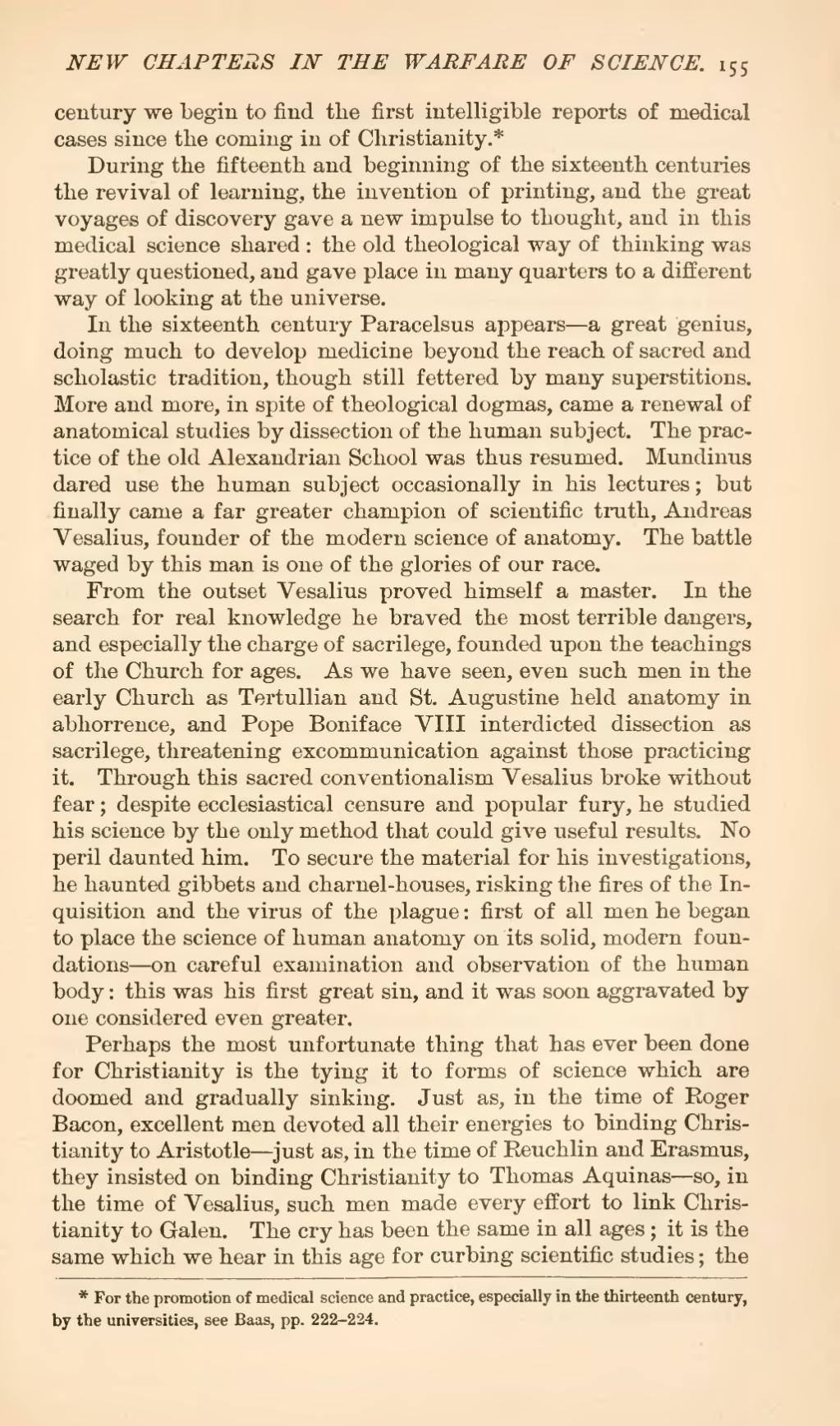century we begin to find the first intelligible reports of medical cases since the coming in of Christianity.[1]
During the fifteenth and beginning of the sixteenth centuries the revival of learning, the invention of printing, and the great voyages of discovery gave a new impulse to thought, and in this medical science shared: the old theological way of thinking was greatly questioned, and gave place in many quarters to a different way of looking at the universe.
In the sixteenth century Paracelsus appears—a great genius, doing much to develop medicine beyond the reach of sacred and scholastic tradition, though still fettered by many superstitions. More and more, in spite of theological dogmas, came a renewal of anatomical studies by dissection of the human subject. The practice of the old Alexandrian School was thus resumed. Mundinus dared use the human subject occasionally in his lectures; but finally came a far greater champion of scientific truth, Andreas Vesalius, founder of the modern science of anatomy. The battle waged by this man is one of the glories of our race.
From the outset Vesalius proved himself a master. In the search for real knowledge he braved the most terrible dangers, and especially the charge of sacrilege, founded upon the teachings of the Church for ages. As we have seen, even such men in the early Church as Tertullian and St. Augustine held anatomy in abhorrence, and Pope Boniface VIII interdicted dissection as sacrilege, threatening excommunication against those practicing it. Through this sacred conventionalism Vesalius broke without fear; despite ecclesiastical censure and popular fury, he studied his science by the only method that could give useful results. No peril daunted him. To secure the material for his investigations, he haunted gibbets and charnel-houses, risking the fires of the Inquisition and the virus of the plague: first of all men he began to place the science of human anatomy on its solid, modern foundations— on careful examination and observation of the human body: this was his first great sin, and it was soon aggravated by one considered even greater.
Perhaps the most unfortunate thing that has ever been done for Christianity is the tying it to forms of science which are doomed and gradually sinking. Just as, in the time of Roger Bacon, excellent men devoted all their energies to binding Christianity to Aristotle—just as, in the time of Reuchlin and Erasmus, they insisted on binding Christianity to Thomas Aquinas—so, in the time of Vesalius, such men made every effort to link Christianity to Galen. The cry has been the same in all ages; it is the
same which we hear in this age for curbing scientific studies; the
- ↑ For the promotion of medical science and practice, especially in the thirteenth century, by the universities, see Baas, pp. 222-224.

